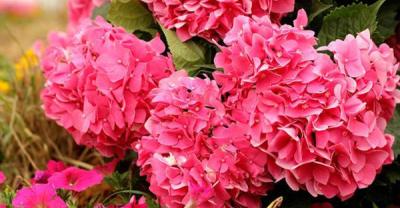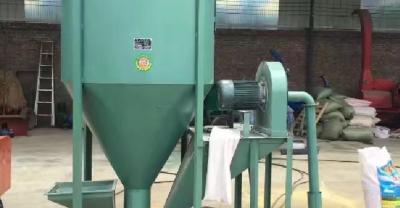Raising flowers at home: the breeding methods and matters needing attention of hydrangea are pleasing to the eye and refreshing.
The eight Immortals, also known as hydrangea, is a famous ornamental flower. Hydrangea flowers are large and beautiful, colorful and admirable, so they are treasures of ornamental flowers. Then as a potted hydrangea, how to maintain!

Culture methods of eight Immortals
Soil selection
In early spring, move the seedlings of the eight Immortals to the pot, and the flower soil should be prepared before that. There are three ways:
Rotten leaf soil, garden soil, river sand and cake fertilizer were mixed according to the ratio of 4 to 3 to 2 to 1.
Or mixed with compost soil, sandy soil and cake fertilizer at the proportion of 4:5:1.
Or rotten leaf soil, sandy soil (or cinder), cake fertilizer according to 6:3:1 mixed soil.
The above materials can be taken from nature. If you can't find them, you have to go to the flower market to buy them. )
Fertilization method
Eight Immortals like fertilizer, in the growing period, about 15 days to apply cake fertilizer. Topdressing is needed for 1 and 2 times in the budding stage, mainly with calcium superphosphate soaking solution to promote the flower to be big and colorful.
Of course, fertilization also plays an important role in reconciling the soil. Baxian likes acidic soil, but the water in the home is neutral, and long-term watering will reduce the acidity of the soil, so ferrous sulfate can be properly added to fertilize to turn it into alum fertilizer to irrigate it. Improve the acidity of the soil.

Watering method
The leaves of the eight Immortals are thick, the flowers are big and gorgeous, and they need more water. However, the eight Immortals are fleshy roots, and there is no stagnant water in the basin, which is easy to rot. Take a look at the watering requirements of the eight Immortals in different periods:
Water frequently in spring and summer to keep the basin soil moist, especially in the high temperature period in summer, water should be watered once in the morning and evening, and pay attention to proper shade at noon.
From May to August, in addition to watering, it is also necessary to spray water on the leaf surface.
The weather is getting cooler after September, so it is necessary to reduce the amount of water, promote the sturdiness of branches and promote dormancy. Winter dormancy reduces watering (if you don't water it) and keeps the basin soil slightly wet.
Lighting requirement
The eight Immortals prefer yin to yang. When you move outdoors in spring, you should keep the plants in a semi-shade and keep the plants in a well-ventilated shade in the middle of summer to prevent sunburn. After September, the light is getting weaker, so put the plant in a bright place to promote the differentiation of flower buds!
Temperature requirement
The most suitable temperature for the growth of eight Immortals is 18-28 ℃, and it should not be lower than 5 ℃ in winter. After flower bud differentiation, put it in the environment of 5: 7 ℃ for 6-8 weeks, it can blossom, raise the temperature after flowering, stabilize it at about 16 ℃, and prolong the flowering period. During flowering, the temperature should not be too high, it is easy to make the flowers fade.

Matters needing attention
The eight Immortals like acid soil, do not tolerate barren, in alkaline soil will be poor growth, branches and leaves yellowing. Flower color is also affected by soil acidity and alkalinity.
In the first ten days of October, the plant should be moved to indoor maintenance, proper water control, keep the temperature at 5 ℃, and promote its dormancy. Remove some of the leaves before moving indoors to avoid rotten leaves and infection.

In the growing period, it is usually necessary to hit the top twice to promote branches. After flowering, the old branch is truncated to control the height of the plant. Cut the plant short again before entering winter, which is beneficial to overwintering.
- Prev

8 years of experience in breeding cold and tropical fish, give some suggestions to beginners
Although there is no big harvest, but also accumulated some small experience, here to exchange with you, novice reference, expert advice. Fish farming is just water.
- Next

How to raise the dance of elegant music? breeding methods and matters needing attention
The propagation of elegant music dance is often done by cutting or grafting. Cuttage is generally carried out in the growing season, cuttings can be pruned during shaping, length requirements.
Related
- On the eggshell is a badge full of pride. British Poultry Egg Market and Consumer observation
- British study: 72% of Britons are willing to buy native eggs raised by insects
- Guidelines for friendly egg production revised the increase of space in chicken sheds can not be forced to change feathers and lay eggs.
- Risk of delay in customs clearance Australia suspends lobster exports to China
- Pig semen-the Vector of virus Transmission (4)
- Pig semen-the Vector of virus Transmission (3)
- Five common causes of difficult control of classical swine fever in clinic and their countermeasures
- Foot-and-mouth disease is the most effective way to prevent it!
- PED is the number one killer of piglets and has to be guarded against in autumn and winter.
- What is "yellow fat pig"? Have you ever heard the pig collector talk about "yellow fat pig"?

